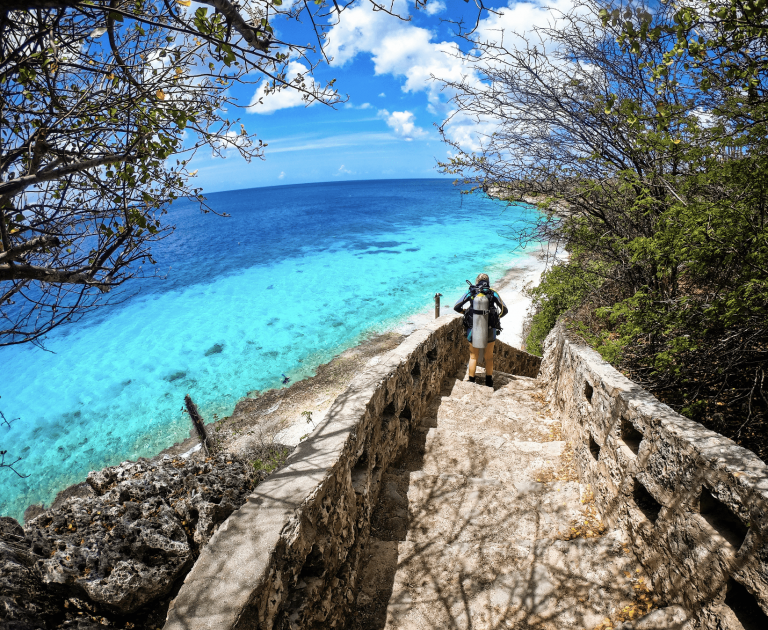
The question on everyone’s mind is, where is safe to visit? Travelers are looking to venture to low risk destinations. The Caribbean, considered a low-risk region, has gradually reopened to travelers of June and July. Its pristine beaches and crystal-clear water have not been the only thing alluring travelers in. Many countries have been gaining popularity due to being a low risk destination. Shared by Kevz Politics, Barbados highlights that many Caribbean countries have emerged as a low COVID-19 risk travel option. Here are the top places considered low risk in the Caribbean.
Very Low Risk Destination in the Caribbean
St. Kitts and Nevis – Reopening October
A COVID-19 Free Saint Kitts & Nevis plans for a October reopening. St. Kitts and Nevis has a low COVID-19 case count among the CARICOM states with just 17 cases all recovered and zero deaths recorded still as of September 2nd. Thinking of a trip to St. Kitts & Nevis? You will have to wait until October 2020 which is when the government there says it will reopen its border. However, the one major caveat is that it looks like a two-week quarantine will be required. The following information pertains to citizens and “incoming travelers,” for now. Formal rules for tourism will be announced in the coming weeks, but it could be similar to what’s on tap for repatriation. A representative for St Kitts and Nevis says, “The regulations that will be in place for incoming visitors once borders reopen in October have yet to be announced.”
Grenada – Open since July
Similar to Saint Kitts & Nevis Grenada has had no deaths with less than 25 cases recorded with all recovered making it a very low risk destination. Since opening in July they have successful been able to remain a safe haven from the virus. They are one of the few Caribbean countries to receive receiv the ‘Safe Travels’ stamp from the World Travel Tourism Council (WTTC).
St. Lucia – Open since July

St. Lucia reopened tourism in early July.
Saint Lucia – open since July 9, with just 26 cases and no deaths is marked as a low risk destination. So far, Saint Lucia has received just under 5,900 travelers through its approved ports of entry, of whom 4,413 were visitors. Despite all these arrivals the country have managed to keep cases down. Find out more HERE Why Saint Lucia Is a Model for Reopening Tourism in the Caribbean .
St Vincent and the Grenadines – Open since July
At the start of St. Vincent and the Grenadines reopening they island recorded 12 cases of COVID-19 since reopening the borders to international flights. Authorities have said that of 12 new cases, 11 are associated with American Airlines (AA) flight 945, which brought 155 passengers to the island on July 11. Despite this, to date the country has had no deaths and has been able to contain the virus with only 3 active cases as of September 2.
Anguilla – Reopening October
A COVID-19 Free Angilla has the lowest confirmed COVID-19 case count among the CARICOM states with just 3 cases with all recovered and zero deaths recorded still as of September 2nd Anguilla’s borders will be closed to most commercial travelers until at least Oct. 31, due to “the rapidly evolving COVID-19 situation globally, particularly the significant increase in cases in the Americas,” according to a statement from Gov. Tim Foy and Premier Dr. Ellis Webster. The original border reopening for all travelers had been set for July 30. Currently, there are no active or suspected cases of COVID-19 on the island.
The Cayman Islands – Reopening October
The Cayman Islands remain closed until October 1st. As of September 2nd, it only has 3 active cases, with one death. The Cayman Islands Government has announced that having continually monitored the rate of infection in other countries, particularly in the United States where the pandemic is still widespread, Cabinet has taken the decision to extend the Islands border closure until 1st October 2020, at which time a further decision will be made. During this time, repatriation flights by Cayman Airways will continue to operate on an ad hoc basis and the air bridge between the UK and the Cayman Islands will also remain open, as this provides a vitally important link between the two countries.
Requirements for entry in the first phase is expected to include: proof of a negative COVID-19 test taken 72 hours before travel; an online application that requires permission from the health authorities for the traveler to arrive; wearing of a health monitoring device upon arrival and payment of a fee for use of the device; monitored self-quarantine for five days; a second COVID-19 test and, if negative, visitors can leave isolation but must continue to wear the monitor. For further information, visit www.gov.ky.
Antigua and Barbuda – Open since June
They have been successful open as of June and have less than 100 cases with only 3 deaths. As of September 2 they on have 5 active cases. The country havs done a great job at keeping the numbers down with stick entry requirments in place. Those who visit must have evidence of a negative COVID-19 RT-PCR medical certificate issued within 7 days of their flight. Once in country, travellers must complete a health declaration form and are subject to a medical screening. Depending on those results, travellers may be subject to further COVID-19 testing at cost. Similar to Belize, travellers are only permitted to stay at certified accommodations.
